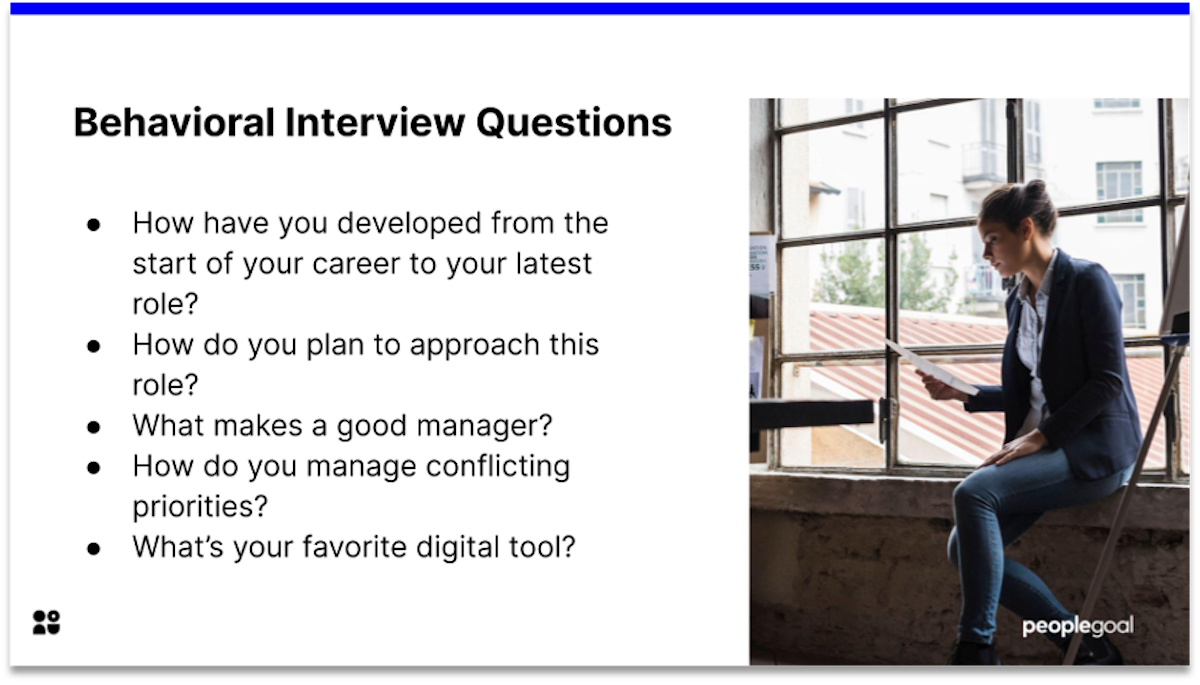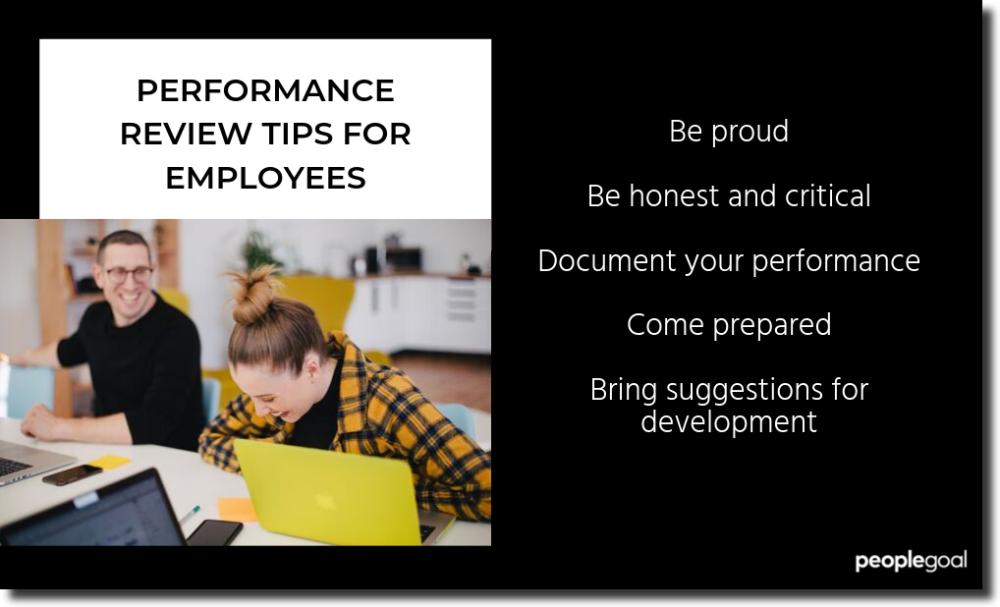It’s easy to treat performance reviews like a process you can just plug in: send out a form, get feedback, check the box.
When I started leading teams, I relied heavily on my instincts and one-on-one feedback to evaluate performance. But as the company grew, I realized something was missing—context. A single perspective, even mine, wasn’t enough to understand how someone truly operated across projects, peers, and clients. That’s when I discovered the power of 360 reviews.
Running a 360-degree review process might seem straightforward, but there’s a lot more to it than just sending out a survey.
That’s what this guide is for. Not to convince you that 360 reviews are important, you probably already know that, but to walk through how to actually run one that works. One that brings in the right voices, asks the right questions, and leads to better conversations and better decisions.
Let’s get into it.
What Is a 360 Review (and Why It Works)?
A 360 review is a way to get performance feedback from more than one person. Instead of relying on a manager’s opinion alone, you collect input from the people someone actually works with — peers, direct reports, cross-functional partners, sometimes even clients. That’s why it’s called 360-degree feedback: the view comes from every angle.
Most traditional performance reviews miss too much. They focus on tasks and results, not on how those results were achieved. They rely on one voice, not the collective experience of a team. And they often create blind spots— especially around interpersonal behavior, leadership, and collaboration.
Here’s why 360 reviews work better:
- You get a full picture of how someone operates, not just what they do, but how they do it.
- Blind spots come to the surface because feedback is coming from people who see different sides of the person.
- Patterns are easier to spot when multiple people mention the same strength or behavior.
- It’s focused on growth, not judgment. The point isn’t to criticize, it’s to help people get better at what they do.
- It shifts ownership. The feedback isn’t coming down from above; it’s coming from across the team. That builds accountability and trust.
If you care about performance and culture, you need feedback that reflects the real working experience — not just the org chart. That’s what makes 360 reviews useful.
Here’s what that looks like in practice:
We ran a 360 review for a team lead who consistently hit her targets. From a manager’s point of view, she was high-performing. But peer feedback told a different story. Teammates described her as dismissive in meetings and slow to share updates. That feedback never would’ve shown up in a traditional review. But once it did, it opened the door to real conversations and ultimately helped her shift her style without compromising performance.
What Are 360-Degree Feedback Key Planning Steps?
If you’re serious about making 360 feedback review work, don’t jump straight into survey creation. The process will only be as strong as the thinking you do up front. That means defining why you’re doing it, who it’s for, and what you’re actually trying to measure.
Here’s where to start.
1. Define the Purpose
You can’t just plug 360 feedback into your org and expect it to work — you need a clear reason for doing it. Are you using it to develop people, or to evaluate them?
- For development: This is where 360 feedback shines. It’s best used to increase self-awareness, support growth, and build soft skills — especially for leadership roles, team leads, or employees stepping into new responsibilities. If that’s your focus, you’ll want to structure your process more like a 360 performance review.
- For evaluation: Be careful. If you’re tying 360 feedback to compensation or promotion decisions, people will start gaming the system — or worse, they’ll stop being honest altogether. It’s not that you can’t use it this way, but you’ll need clear guardrails to protect anonymity and integrity.
When should you use it?
- During leadership development programs
- Ahead of annual or mid-year reviews to gather broader context
- As part of performance resets, when someone needs a full view of where they stand
- As a foundation for coaching engagements or internal mentoring
Don’t run a 360 just because it sounds like a good idea. Know what you’re trying to achieve, and build around that.
2. Set Clear Criteria for Evaluation
If you want useful feedback, you need to be specific about what you’re asking people to evaluate. The goal is to focus on how someone works with others, not just what they deliver. Knowing what feedback questions to ask makes all the difference.
Here’s what you should include:
- Behaviors: Think observable actions — communication style, responsiveness, reliability, initiative.
- Soft skills: Teamwork, adaptability, emotional intelligence, leadership presence.
- Company values: If your organization has defined values or core competencies, use them. Anchor your questions to what “good” looks like in your culture.
- Job-specific criteria: For example, if someone leads cross-functional projects, you might ask about how well they coordinate with different teams or handle stakeholder alignment.
This isn’t the time to wing it. Write down exactly what you want to measure, and share it with your reviewers ahead of time so they know what to look for.
3. Select the Right Participants
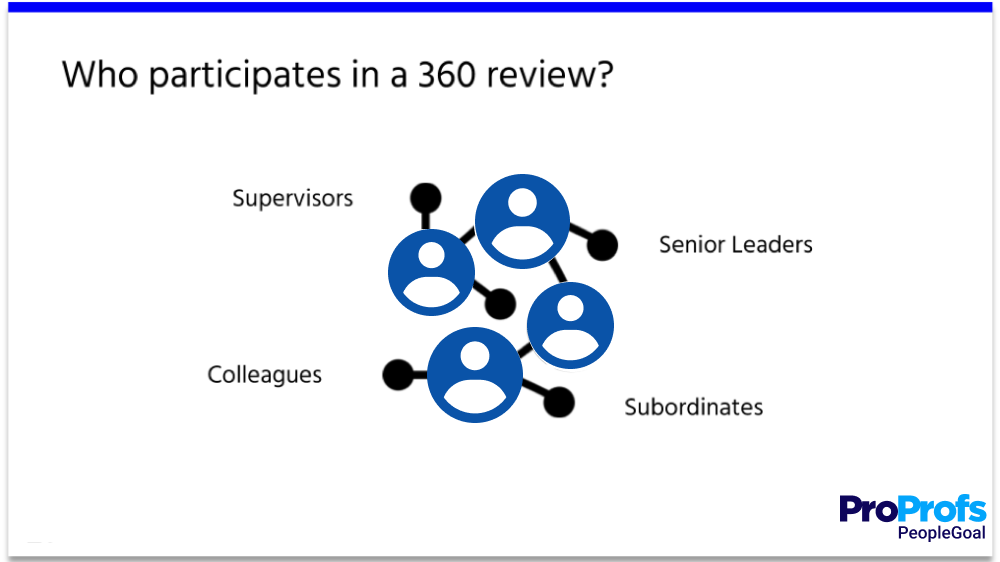
For each employee, aim to include a mix of people who interact with them regularly and in different capacities. That usually means:
- Their direct manager
- A few peers or team members
- At least one direct report (if they’re in a leadership role)
- Cross-functional collaborators
- Clients or external partners (if relevant to their role)
Aim for 5–7 reviewers per employee. That’s enough to reveal patterns and protect anonymity without overwhelming everyone involved.
Keep in mind:
- Let employees have input on who’s included, but don’t let them cherry-pick only people they’re close with.
- Try to cover different perspectives — people who work with them on projects, in meetings, or under stress. If you skip this step, you’re inviting bias or surface-level input — and those are two of the most common 360 feedback challenges.
Here’s a quick reference to help you map out who to include:
| Role Type | Why Include Them |
|---|---|
| Direct Manager | Has the broadest view of performance and growth |
| Peers / Colleagues | See day-to-day behaviors and team dynamics |
| Direct Reports | Offer insight into leadership, trust, and clarity |
| Cross-functional Partners | Observe collaboration, conflict resolution, and influence |
| Clients / External Partners | Assess professionalism, follow-through, and communication |
Designing the 360 Review Process
What you need is a repeatable, structured process that gives you usable insights without overwhelming your team.
Here’s exactly how to build it.
Step 1: Create the Right Feedback Questions
If the questions are vague or irrelevant, the feedback will be too. You’re not just gathering opinions — you’re trying to surface specific behaviors and patterns. That means your questions need to be clear, role-relevant, and aligned with the behaviors you care about.
You’ll want to use a mix of:
- Rating-scale questions (e.g. “How consistently does this person meet deadlines?” on a 1–5 scale)
- Open-ended prompts (e.g. “What’s one thing this person should start doing to improve team collaboration?”)
If you’re not sure where to start, follow these 360-degree feedback examples.
Here’s a simple structure:
| Question Type | Purpose | Example |
|---|---|---|
| Rating scale (1–5) | Benchmarking behaviors across reviewers | “Demonstrates clear communication with team members” |
| Start/Stop/Continue | Behavioral change input | “What should this person start, stop, and continue doing?” |
| Open-ended observations | Qualitative insight | “Describe how this person handles conflict or stress.” |
Pro Tip:
Stick to 10–15 questions max. If it takes longer than 20 minutes to complete, most people will rush through it or disengage completely.
Step 2: Choose How You’ll Collect Feedback
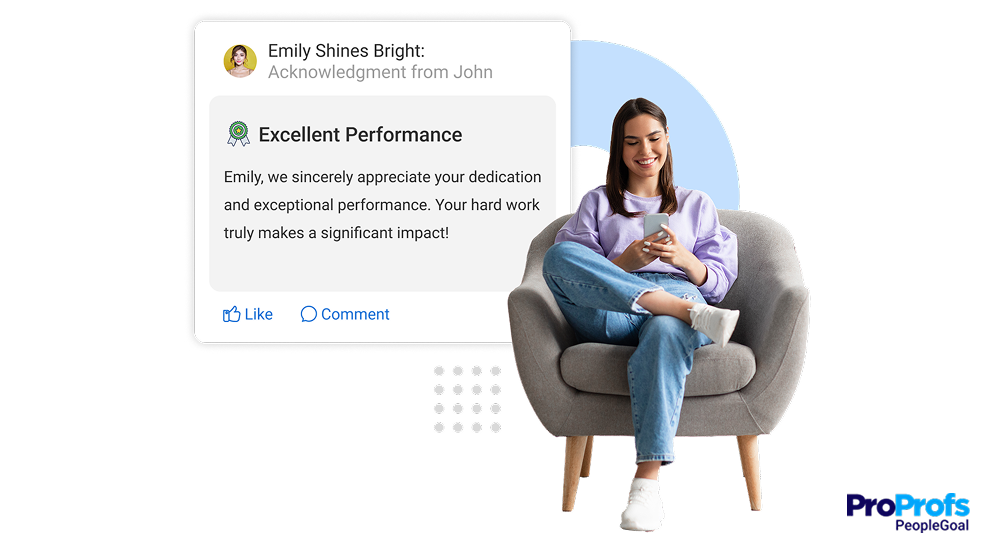
You need a method that’s both easy to use and protects confidentiality. The most common formats are:
- Online surveys: fast, scalable, and usually anonymous
- Email forms: fine for small teams, but hard to track at scale
- One-on-one conversations: more personal, but harder to standardize
If you’re running this across multiple teams or roles, it’s worth using a platform that handles automation, anonymity, and reporting in one place.
This is where tools like PeopleGoal can help. It gives you customizable 360 feedback review templates, lets you define roles and workflows, and automates reminders so you’re not chasing reviewers manually. It’s especially useful when you’re trying to keep feedback cycles consistent across departments without creating extra admin work for yourself.
Step 3: Set a Realistic Timeline
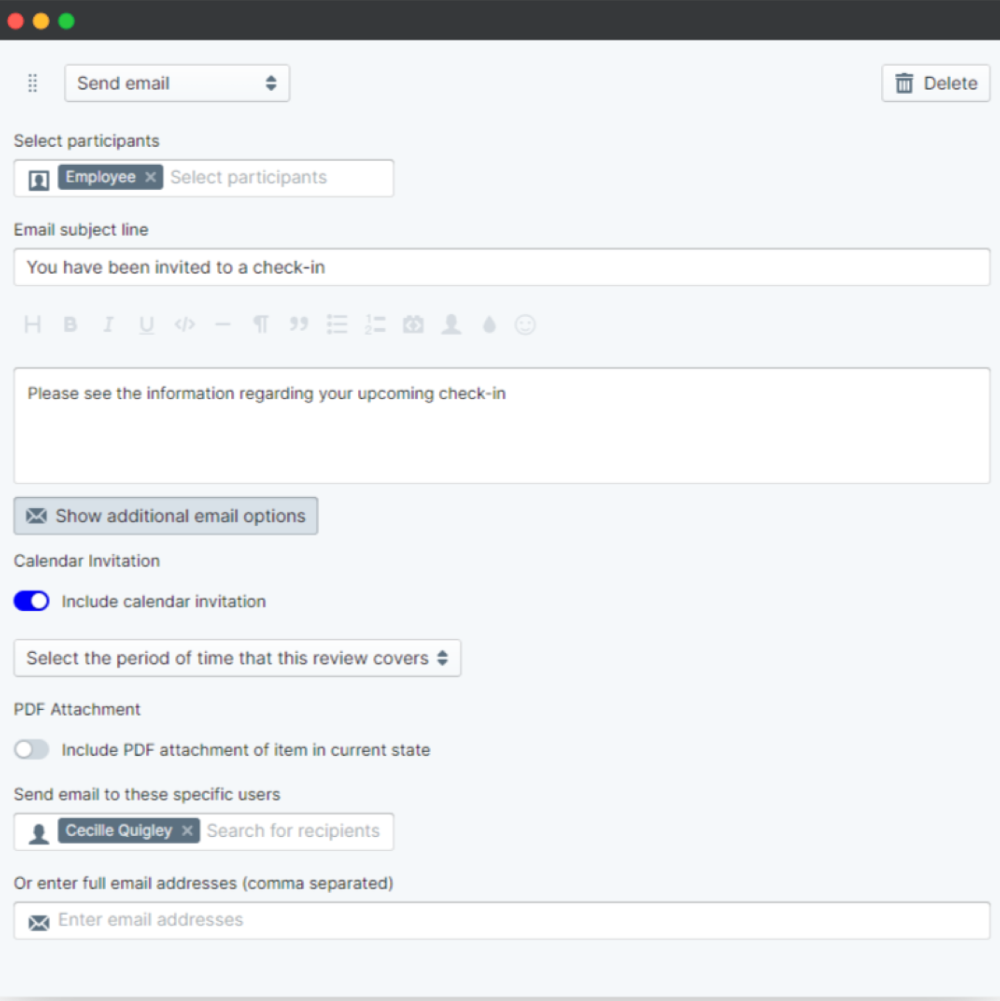
Don’t drag it out. A 360 review process works best when it runs on a tight, clear schedule, typically 2 to 3 weeks from start to finish.
Here’s a basic timeline you can adjust based on your org size:
- Week 1: Launch the process and notify participants. Give reviewers a deadline to complete their feedback (usually 7 days).
- Week 2: Collect and review results. Follow up with any missing input.
- Week 3: Share reports with managers and hold feedback conversations.
Set all expectations upfront: when reviews will be sent, how long they’ll take, who sees what, and when results will be discussed.
Step 4: Prepare the Feedback Report
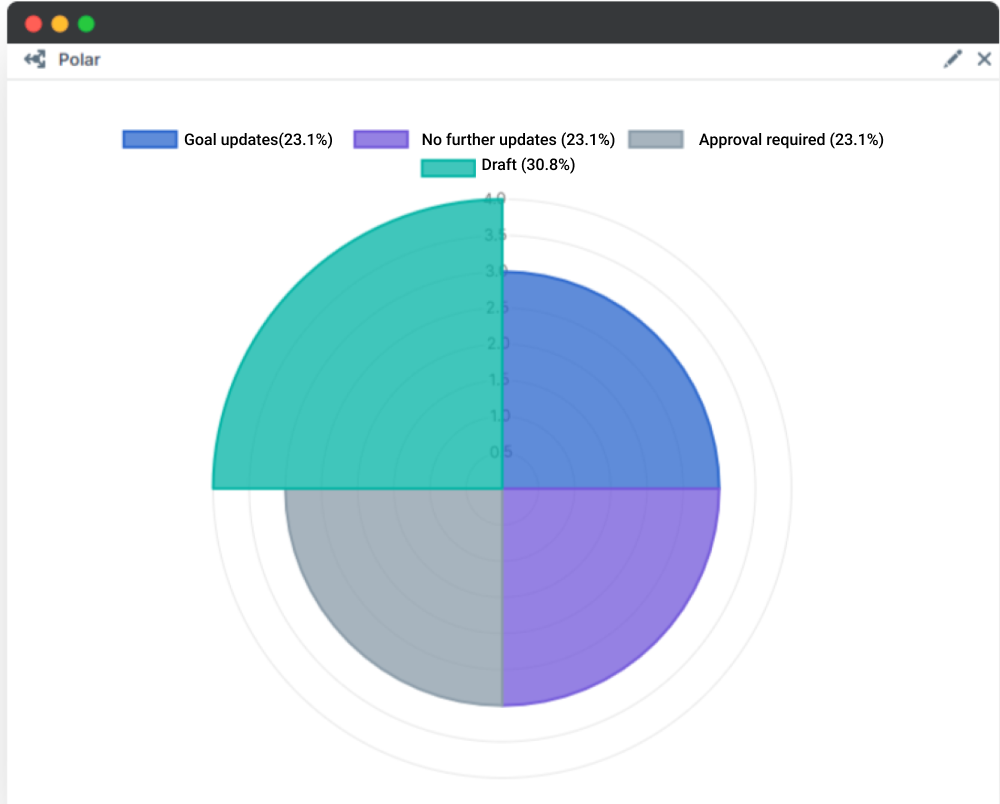
Once responses are in, your job is to translate the data into something actionable. A good report:
- Summarizes scores by theme (e.g., communication, leadership, collaboration)
- Highlights patterns (strengths and opportunities) across reviewers
- Anonymizes individual comments, especially when coming from peers or reports
- Includes open-ended quotes only when they’re useful and non-identifying
You don’t need a 15-page PDF. You need a clear snapshot that a manager and employee can walk through together in under 30 minutes.
Working with a remote team? Watch the following video on how to conduct remote performance reviews.
How to Deliver 360 Feedback Effectively
This is the step that makes or breaks the 360 review. If the delivery is messy, vague, or overly formal, the entire effort can fall flat.
Here’s the process I follow when delivering 360 feedback, step by step, no guesswork:
Step 1: Block a Proper 1:1
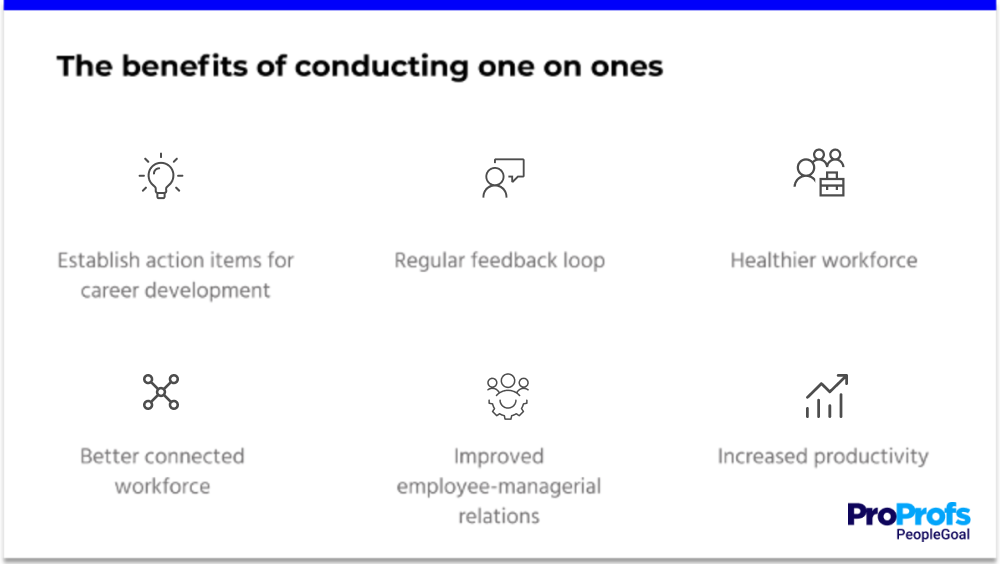
What to do
- Schedule 45–60 minutes, not “we’ll squeeze this into our weekly check-in.”
- Send the report 24 hours before the meeting. Not a week in advance (overthinking), not 15 minutes before (unprepared).
- In the invite, clarify exactly what this is:
“This session is for us to go through your 360 feedback together — look at patterns, discuss what stands out, and decide what you want to act on.”
Why it matters
Don’t email the report and assume they’ll ‘get it.’ This isn’t a document — it’s a conversation. Check out the image below for some quick tips.
Step 2: Open With Context
What to do
Remind them why this feedback exists:
“This isn’t a performance score. It’s a chance to see how your work is showing up across the team, and what’s helping or hurting your impact.”
Set expectations:
“We’re not going to dissect every line. We’ll focus on what’s repeated, what matters, and what you want to work on.”
Why it matters
People walk into feedback conversations braced for judgment. Grounding them on purpose takes the edge off.
Step 3: Start With What’s Working
What to do
- Highlight 2–3 repeated strengths from the feedback.
- Use exact phrases from multiple reviewers:
“Three people called out how calm you stay under pressure, especially in high-stakes meetings. That’s something people rely on.”
Why it matters
Leading with real strengths creates trust. It shows that the feedback isn’t just a list of problems — it’s a full view of how they’re showing up.
Step 4: Share Development Areas—Including the Negative Feedback
Why this matters:
Negative feedback is where most 360s go off track. If you sugarcoat it, people won’t know what to change. If you drop it like a bomb, they’ll get defensive. The way you deliver critical input matters as much as the content itself.
What to do:
- Be direct, but stay neutral. Focus on what was said, not your interpretation of it.
- Call out that this is difficult feedback and that feeling uncomfortable is okay.
“I know this isn’t easy to hear. Take a moment — does any part of that feel familiar?”
“Let’s talk through it — not to justify anything, but to understand what’s behind it.”
- Don’t expect resolution in the same meeting. Focus on identifying one area they’re open to working on, and revisit the rest later.
Why this works:
Negative feedback isn’t the problem; it’s how it’s delivered. People are more likely to hear and do something with it when it’s specific, respectful, and clearly part of a bigger development conversation.
Step 5: Pause and Ask
What to do
Ask a question and wait:
- “What stood out to you?”
- “Did anything surprise you, or confirm what you already suspected?”
Then stop talking.
Why it matters
If you keep talking, they’ll nod politely and say nothing. You’re not just giving feedback; you’re helping them make sense of it.
Step 6: Pick One Focus Area
What to do
Narrow it down:
- “If you worked on just one thing from this feedback, what would make the biggest difference?”
- “Let’s define what better looks like — what could you do differently this month?”
Make it specific:
- Not: “Be more collaborative”
- Yes: “Ask the team for input before finalizing the client handoff process.”
Why it matters
No one can act on five priorities at once. You’re building momentum, not a makeover plan.
Step 7: Define Action + Follow-Up (Right Now)
What to do
Before the meeting ends:
- Agree on a small, clear next step.
- Put a 15-minute check-in on the calendar 30 days out.
“Let’s reconnect next month to check in on how this is going — not to rehash everything, just to see what’s shifted.”
Why it matters
No follow-up = no behavior change. A loose end here makes the rest of the process meaningless.
Step 8: Keep the Door Open
What to do
- In your next few 1:1s, casually revisit the topic:
“Have you had a chance to try that thing we talked about?”
“Has the feedback changed anything for you yet?”
- When they make progress, say so. Out loud. In front of others, if it makes sense.
Why it matters
Feedback isn’t a one-time event. It’s part of how you coach, communicate, and build trust, every week, not just during review season.
What Introducing 360 Feedback Looked Like for Us
The first time we ran 360 reviews, it was a mess.
We sent out Google Forms with open-ended questions, didn’t set clear deadlines, and left it up to managers to figure out how to deliver the feedback. Some people got five responses, others got two. One person received vague praise like “good communicator,” another got a wall of unfiltered critique. No one was really sure what to do with it.
Reviewers didn’t know what was expected. Managers struggled to make the feedback actionable. And the people receiving it walked away more confused than clear.
What we learned: the feedback itself isn’t the problem. The problem is the lack of structure. Once we fixed that, the whole process started working the way it was supposed to.
To make the process even more efficient, we started looking for a system that we could shape around our team. After testing dozens of feedback and performance management tools, we came across PeopleGoal.
It gave us exactly what we needed — a flexible, no-code 360° feedback setup we could roll out quickly, adjust on the fly, and rely on. And by default, all feedback stays anonymous, which made trust a lot easier.
Questions to Include in a 360 Review
The quality of your 360 feedback depends on the quality of your feedback questions.
If you ask vague things like “Any thoughts on working with this person?”, don’t expect anything useful. You’ll get safe answers, praise with no substance, or feedback that’s impossible to act on.
Every question in a 360 review should be specific, behavior-focused, and framed to help the recipient improve. You’re not looking for opinions. You’re looking for clear signals about how someone works with others and what impact they’re having.
A Simple Format That Works
You don’t need 20 questions. You need 5 to 7 good ones.
Use a combination of:
- Scaled questions to rate consistency and behaviors
- Open-ended prompts for context and nuance
- Start / Stop / Continue for practical suggestions
Sample Questions to Include:
| Type | Example Questions | |
|---|---|---|
| Scaled (1–5) | How clearly does this person communicate with others? | |
| How well do they handle feedback and adapt their behavior? | ||
| How reliable are they in meeting team expectations and deadlines? | ||
| Start / Stop / Continue | What’s one thing this person should start doing to be more effective? | |
| What’s one habit they should stop because it slows down the team? | ||
| What’s working well that they should continue? | ||
| Open-ended | What’s something this person does that others rely on? | |
| Where do you think they might be holding themselves back? | ||
| How do they usually respond when things go off track or get stressful? |
Keep the total survey time under 15 minutes. If it feels like a chore, the feedback quality will drop fast.
What You Want to Surface
- What behaviors do people trust and value
- What consistently creates friction or slows things down
- What the person might not see about themselves
- Where they have room to grow in how they collaborate and lead
Remember, the goal is not to score someone. It’s to help them see how they’re showing up across different work relationships — and what they can do with that insight.
Common 360 Review Challenges (and How to Solve Them)
If people don’t understand the why, the how, or the what’s next, the whole thing turns into a one-off exercise with no real impact.
Here are the most common challenges teams run into, and what to do about them.
Challenge 1: The feedback is too vague
People don’t know what kind of feedback they’re supposed to give. So they default to broad statements like “great attitude” or “good team player.” Nothing wrong with that — it’s just not helpful.
How to fix it:
- Write clear, behavior-based questions. Instead of “Any feedback?”, ask “How well does this person support team goals when under pressure?”
- Limit the number of questions to 5–7, max. People give better answers when they’re not overwhelmed.
- Before launching the review, send a short explainer to reviewers. Include:
- What the review is for
- How to give helpful feedback (specific > general)
- A quick example of a good answer
Even better: Show them a sample:
Not helpful: “She’s great to work with.”
Helpful: “She stays calm under pressure and helps prioritize clearly during client escalations.”
Challenge 2: People sugarcoat or hold back
The moment people think feedback is tied to pay, bonuses, or promotions, honesty drops. Feedback becomes safe, or worse, performative.
How to fix it:
- Make it 100% clear this is for development only, not tied to performance ratings.
- Say it upfront in the email, the form, and the kickoff message:
“This feedback is confidential and won’t be used in performance or comp decisions.” - Keep reviews anonymous unless there’s a specific reason not to. Anonymous feedback makes it easier for people to be direct, especially peers and reports.
- Don’t send reviews around the time of promotions or annual raises. That timing alone sends the wrong signal.
Tip: During rollout, do a live session or record a short walkthrough where you explain how anonymity works and who will see what.
Challenge 3: Reviewers don’t take it seriously
Some people rush through the form. Others never complete it. They see it as extra admin work, not something that affects the team or helps the person improve.
How to fix it:
- Hand-pick reviewers instead of bulk-assigning. Tell them why they were chosen:
“You’ve worked closely with [Name] on [Project], and your perspective is valuable.” - Set a clear deadline (ideally 7–10 days) and include a calendar reminder.
- Use automated nudges. If your tool supports it, set up email or Slack reminders two days before the deadline.
- Keep the process consistent. Make it something the team expects every 6 months, not once in a while.
What to say in the reminder:
“This review only takes 10–15 minutes. Honest, specific feedback makes this valuable — not just for [Name], but for how we all work better together.”
Challenge 4: The process is messy and inconsistent
Some people get five reviewers, others get two. Managers don’t know how to deliver the results. Reviews sit in inboxes with no follow-up.
How to fix it:
- Assign one person to own the process — someone from HR, ops, or your team who manages the flow.
- Standardize:
- Who gets reviewed (e.g., all people managers)
- Who reviews them (e.g., manager, 2 peers, 1 report)
- When it runs (e.g. every March and September)
- Create a simple checklist for each cycle:
- Form ready
- Participants selected
- Timeline defined
- Reviewers briefed
- Feedback delivered
- Action items + follow-ups scheduled
Optional: Use a tool to handle reviewer assignments and deadline tracking. Even basic automation removes most of the friction.
Challenge 5: No one knows what to do after the review
The report gets delivered. People skim it. Managers say “Good job,” and that’s it. No change. No follow-up.
How to fix it:
- Schedule a 1:1 session with the manager and employee to walk through the report. Do it within one week of delivery.
- Use a simple structure in that meeting:
- Start with what’s working
- Highlight one behavior to improve
- Ask: “What’s one thing you’ll focus on over the next month?”
- Write that action down in your HR system, in a shared doc, and in the calendar.
- Book a follow-up check-in 30 days out. Don’t leave it open-ended.
If you’re managing the manager: Follow up with them. Ask, “Did you meet and define the next step with [Name]?” If the answer is no, the loop isn’t closed.
Challenge 6: The whole thing feels like extra work
People treat 360s as a side project — something that takes too long, doesn’t give value, and breaks their workflow.
How to fix it:
- Keep the form simple: 5–7 well-written questions, not 20.
- Don’t over-complicate the launch. Send one clear email with:
- The “why”
- The deadline
- A short FAQ (“Is this anonymous?”, “Who sees the feedback?”, “How long will this take?”)
- Set a standard timeline: Launch to close in 2–3 weeks max.
- Build it into existing review cycles or quarterly check-ins. Don’t bolt it on separately.
When people see that the feedback is short, clear, and followed by action, they stop seeing it as overhead and start seeing it as part of how the team works.
Integrating 360 Feedback into Broader Performance Strategy
Here’s how to embed 360 feedback into your broader performance strategy so it actually drives growth, clarity, and alignment.
Step 1: Link 360 Feedback to Regular Check-Ins
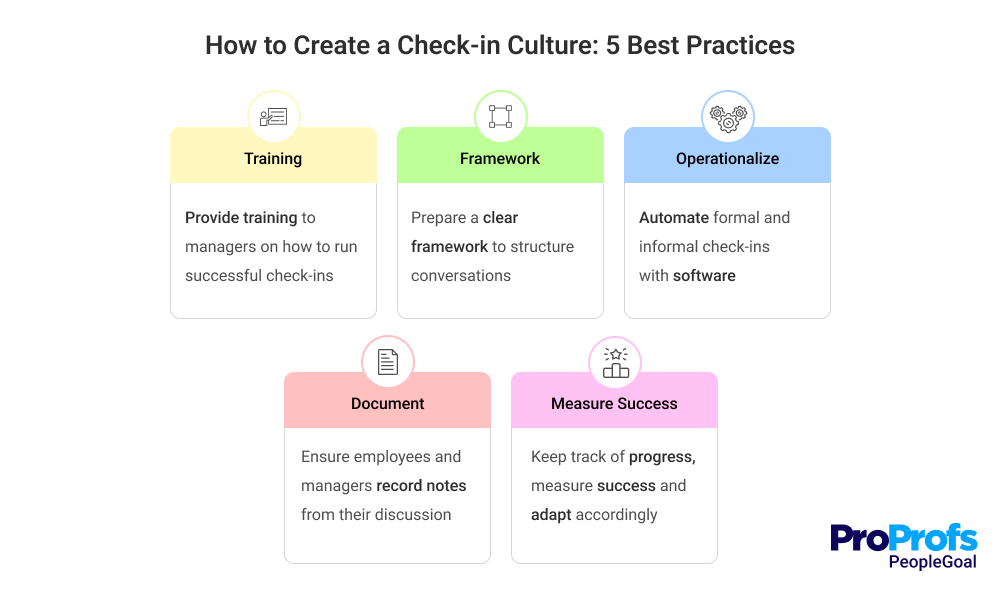
Don’t wait for the annual review to bring up 360 feedback. Use it as a foundation for your ongoing 1:1 conversations.
- After the review, schedule monthly or quarterly check-ins focused on progress against the feedback.
- Use these conversations to adjust goals, celebrate wins, and troubleshoot challenges.
- Encourage managers and employees to keep feedback channels open between formal cycles.
Step 2: Use 360 Feedback to Inform Development Plans
Feedback without action plans is wasted time.
- Take the insights from the 360 review and translate them into clear development objectives.
- Identify training, coaching, or stretch assignments that address specific feedback themes.
- Document these plans and revisit them regularly in performance discussions.
Step 3: Separate Development from Compensation
Keep 360 feedback focused on growth, not pay.
- Make it clear that 360 reviews don’t directly impact bonuses or promotions.
- Use separate processes for performance ratings and compensation decisions.
- This keeps feedback honest and uncensored.
Step 4: Combine 360 Feedback with Goal-Setting Frameworks
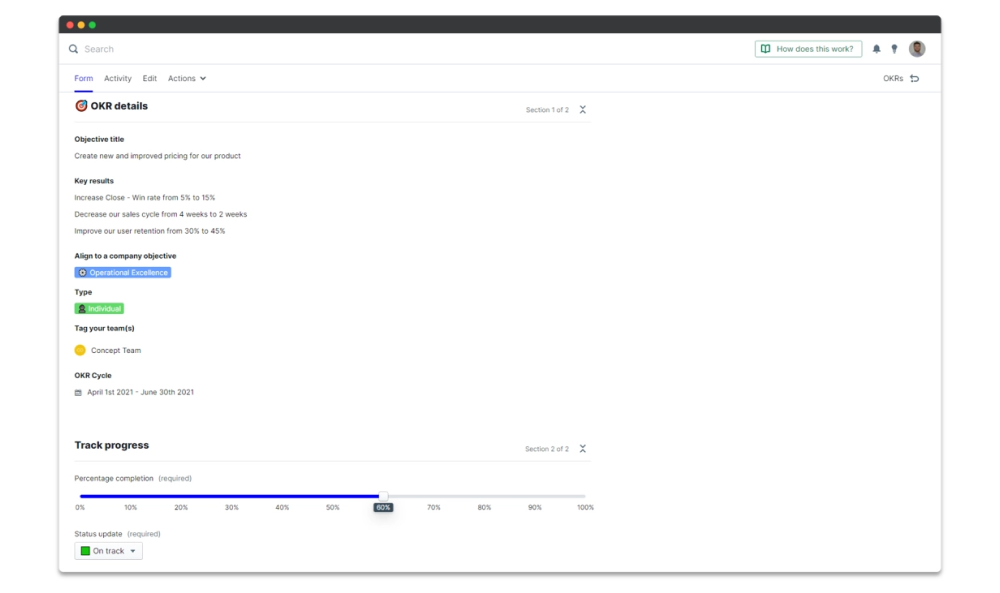
Tie the feedback themes to individual goals or OKRs.
- If the feedback highlights leadership gaps, set leadership development goals.
- If collaboration needs improving, include cross-team projects as objectives.
- Regularly check progress on these goals alongside ongoing feedback.
Step 5: Involve Leadership and Make Feedback Visible
Leadership buy-in is critical.
- Get executives and managers to share their own feedback experiences.
- Share aggregated, anonymized feedback trends in team or company-wide meetings.
- Celebrate when feedback leads to change — it motivates others to engage.
Step 6: Build a Feedback Culture
Make feedback a regular habit, not a once-a-year chore.
- Train managers and employees on giving and receiving feedback.
- Encourage peer-to-peer feedback throughout the year.
- Use tools and platforms that support ongoing feedback cycles seamlessly.
Integrating 360 feedback into your broader performance strategy doesn’t have to be complicated. The key is to make it part of how you work, not a separate project.
Watch this short video on how you can enable a feedback culture:
Real-Life Success Stories:
How Forney Achieved 100% Participation in Their Employee Review Process
Start Building Better Feedback Cycles Today
Running a 360 review well isn’t just about collecting feedback; it’s about creating a process that drives real growth. When you set clear expectations, ask the right questions, deliver feedback thoughtfully, and follow through consistently, you turn a routine exercise into a powerful development tool.
Remember, the value of a 360 review comes not from the report itself, but from how you use the insights it provides. Keep the process simple, transparent, and focused on behaviors, and you’ll build trust and engagement across your team.
Start small. Build the rhythm with regular check-ins, clear action plans, and real conversations. Make feedback part of your culture, not a once-a-year event.
Tools like PeopleGoal can help streamline and organize the process, making it easier to customize questions, manage reviewers, and track progress — all without adding extra complexity.
Frequently Asked Questions About 360 Feedback
What should I do if biases or inexperience affect feedback quality?
Train participants on giving constructive, behavior-focused feedback before launching the review. Use clear guidelines, examples, and encourage reviewers to avoid personal judgments. Consider anonymizing feedback to reduce social pressure and bias.
How can I integrate 360 feedback insights into talent development beyond individual reviews?
Aggregate data across teams or departments to identify common strengths and gaps. Use this for succession planning, leadership development programs, and targeted training initiatives. Ensure insights inform broader talent strategies rather than isolated cases.
Can 360 reviews be customized by role or seniority?
Yes. Tailor questions and evaluation criteria based on role, department, or leadership level to keep feedback relevant and actionable. Customizable workflows and forms ensure the process fits diverse organizational needs without one-size-fits-all surveys.
Ready to 3x Your Teams' Performance?
Use the best performance management software to align goals, track progress, and boost employee engagement.


